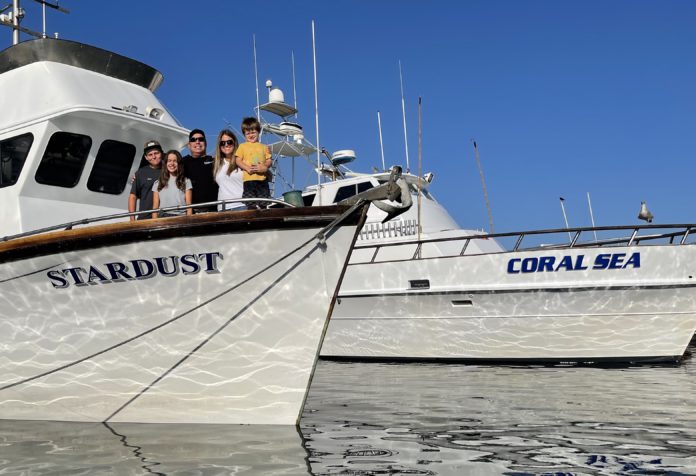LISTEN to Jaime Diamond discuss this editorial on episode 49 of the WON Podcast:
[buzzsprout episode=’9960323′ player=’true’]
Guest editorial by Jamie Diamond,
Owner of Stardust Sportfishing, Santa Barbara
Imagine if the state ruled that your hot water heater is no longer environmentally compliant and it must be removed. When the new water heater does not fit, the state then mandates that you tear down your entire home and build a new one so that it can. Too expensive, you say? Oh well.Crazy as this sounds, something like this is happening to commercial sportfishing boats.
The California Air Resource Board (CARB) has proposed engine emission regulations that mandate new diesel engines and technology that are too large and heavy for existing commercial passenger sportfishing boats, requiring that they be removed from service. CARB tells boat owners that vessel replacement is economically feasible, just pass on the cost of vessel replacement to customers.
New boats can cost over $5 million, which would triple the cost of the most affordable way to access the ocean for the day. CARB fails to recognize that, by tripling prices, customers won’t be able to afford to participate at the same level and many won’t be able to participate at all, meaning boat owners will go out of business.
While the sportfishing community embraces the need to lower engine emissions, many wonder aloud how could CARB reach the conclusion that a small fleet of some 200 vessels that operate offshore poses such a substantial public health risk, that they need to be scrapped and replaced at a cost of nearly $1 billion to California’s sportfishing fleet? The answer can be found in CARB’s emission data.
From the very beginning and throughout a recent CARB workshop last week, boat owners have vigorously challenged CARB’s use of emission data that grossly overstates the size of California’s fleet, the amount of time boats spend in regulated waters, and their poor understanding of how boats operate. Boats operate many miles from shore and population bases, anchoring or drifting at sea as they fish.
CARB’s data also projects that as the state’s population grows so will the number of boats, an assumption that may apply to automobiles. However, the number of commercial sportfishing boats has been somewhat stagnant since the early 1970s, when the state’s population was half the size and there were nearly 1 million more licensed anglers.
These are some reasons why CARB’s public health assessment became grossly exaggerated and with it, came draconian proposed regulations. At the CARB workshop on Jan. 12, these concerns fell on deaf ears, once again. Staff told boat owners that they were not directed by their board to reevaluate and update the data and their flawed modeling, so they will not. Maybe they consider flawed data rounding errors, but within these margins come economic consequences for people who make their living at sea and the coastal communities that depend on tourism.
So, there you have it. Staff will continue to use flawed data, even if it marks the end of California’s commercial sportfishing industry and with it, quality jobs and support of coastal economies. However, these regulations are not a done deal and with your help, we will not go down without a fight.
California anglers made their voice heard at the November Board meeting and can continue to help by joining a petition (www.savefishing.com) that urges Governor Newsom to Save our Boats and participate at CARB’s virtual hearing that will likely be held in late March. The future of offshore sportfishing depends on keeping access to the sea accessible and affordable for all families and not just for the wealthy and elite.



